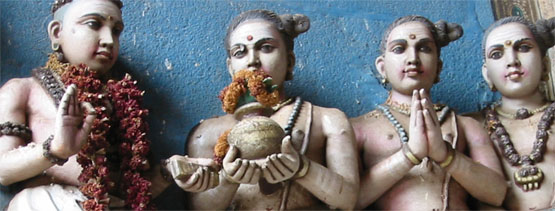|
The content within this website is derived of excerpts from an ongoing research project on hasta mudra as they are utilized in Bharata Natyam classical dance of India. The literal translation of the Sanskrit hasta mudra is hand (hasta) symbol (mudra), though hasta mudra can be interpreted in English as hand gestures or sign language. The broader scope of this project encompasses the ancient art of hand symbols as found in all the arts, including fine arts, performing arts, ritual arts, and healing arts.
Drawing connections within movement and myth, life and art, this project aims to provide insight into the world of hand symbolism through examining written and visual examples. We start with a brief historical overview and then proceed to analyze the usage of hasta mudras in dance. Technical nuances in their significance are examined as well as important artistic and stylistic qualities. This study's analysis is offered from the point of view of an experienced practitioner of the art and is supported by several ancient texts, lending it both a personal as well as scholarly perspective.
(Note: Within the Hasta Mudra site you may encounter terms that appear within our glossary. These terms are linked directly to their respective reference within the glossary.)

|